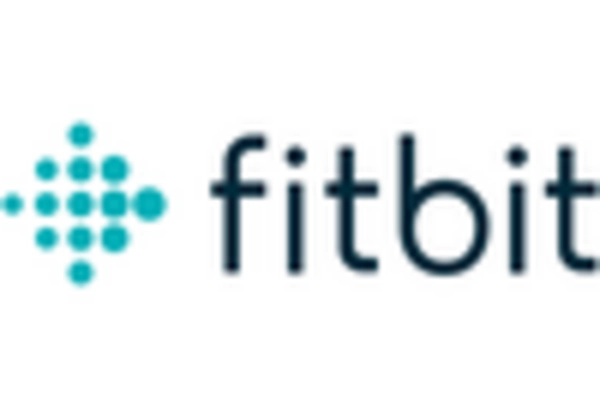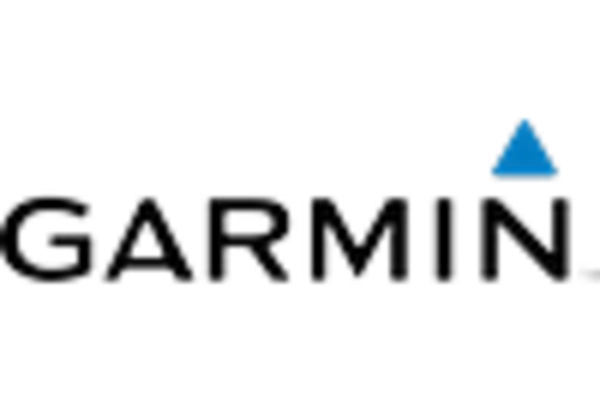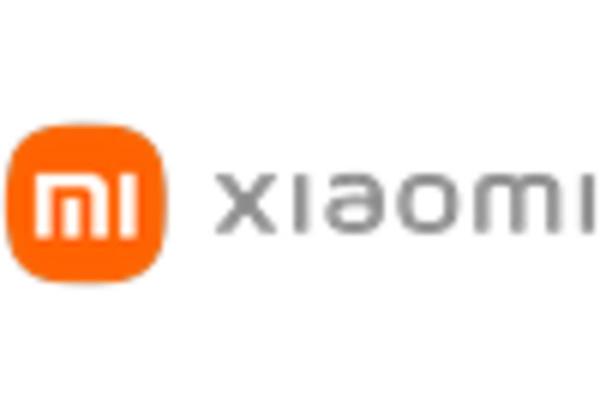Technological Advancements
Rapid advancements in technology are significantly influencing the wearable technology market. Innovations in miniaturization, battery life, and connectivity have led to the development of more sophisticated devices that cater to diverse consumer needs. In the UK, the introduction of 5G technology is anticipated to enhance the functionality of wearables, enabling faster data transmission and improved user experiences. Additionally, the incorporation of artificial intelligence and machine learning algorithms into wearable devices allows for personalized health insights and predictive analytics. This technological evolution is reflected in the market, where the value of the wearable technology market is projected to reach £5 billion by 2026. As these advancements continue to unfold, they are likely to attract a broader consumer base, further driving the growth of the industry.
Rising Health Consciousness
The increasing awareness of health and fitness among consumers is a pivotal driver for the wearable technology market. In the UK, a notable shift towards proactive health management has been observed, with individuals seeking devices that monitor vital signs and physical activity. This trend is reflected in the market data, which indicates that the health and fitness segment accounts for approximately 40% of the total wearable technology market. As consumers become more health-conscious, the demand for wearables that provide real-time health insights is likely to grow, thereby propelling the industry forward. Furthermore, the integration of advanced sensors and AI capabilities in these devices enhances their appeal, making them indispensable tools for health management. Consequently, the wearable technology market is expected to witness sustained growth as more individuals prioritize their well-being.
Evolving Consumer Preferences
The wearable technology market is being shaped by evolving consumer preferences, particularly among younger demographics who prioritize connectivity and functionality. In the UK, millennials and Gen Z consumers are increasingly drawn to wearables that offer seamless integration with smartphones and other digital devices. This shift in consumer behavior is reflected in market trends, where multifunctional devices, such as smartwatches, are gaining popularity. The market data indicates that smartwatches are projected to account for nearly 35% of the wearable technology market by 2025. As consumers seek devices that not only track health metrics but also provide notifications and app functionalities, the demand for innovative wearables is likely to rise. This evolution in consumer preferences is expected to drive the industry towards more versatile and feature-rich products.
Increased Adoption in Healthcare
The wearable technology market is experiencing a surge in adoption within the healthcare sector, driven by the need for remote patient monitoring and telehealth solutions. In the UK, healthcare providers are increasingly leveraging wearable devices to track patient health metrics, facilitating timely interventions and improving patient outcomes. This trend is underscored by market data indicating that the healthcare segment is expected to account for over 30% of the wearable technology market by 2025. The ability of wearables to collect and transmit health data in real-time is transforming patient care, making it more efficient and accessible. As healthcare systems continue to embrace digital transformation, the demand for wearables that support these initiatives is likely to grow, thereby propelling the industry forward.
Growing Demand for Fitness Tracking
The wearable technology market is significantly driven by the escalating demand for fitness tracking devices. In the UK, consumers are increasingly investing in wearables that offer comprehensive fitness tracking features, such as step counting, heart rate monitoring, and sleep analysis. This trend is reflected in market data, which suggests that fitness trackers represent approximately 50% of the total wearable technology market. As individuals seek to enhance their fitness levels and overall well-being, the appeal of these devices continues to rise. Moreover, the integration of social features and gamification elements in fitness wearables is likely to further engage users, fostering a community around health and fitness. Consequently, the wearable technology market is poised for continued expansion as more consumers prioritize fitness and wellness.
















Leave a Comment